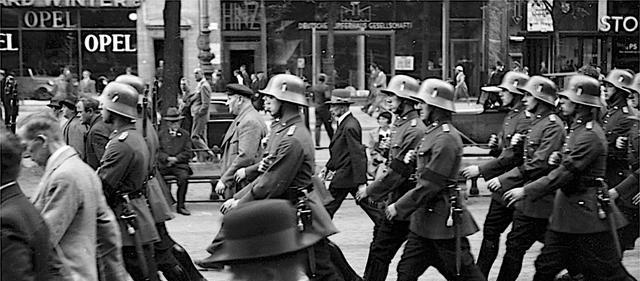
Mitte is the first district of Berlin and has historically been the heart of the city. The Wedding subdivision was a separate district until the century before it was merged. At the end of the nineteenth century, Witting belonged to the workers' residential area. In the 1930s, workers' protests were frequent and they were targeted by the Nazi government.
【Berlin City Palace】The Berlin City Palace was originally the Imperial Palace of the German Empire (the building in the picture), which was also the palace of the Prussian kings; at the end of World War II, the building was destroyed in the war. Its earliest part of the building, began in 1443. During the reign of Frederick I, the palace (Baroque style) inhabited by the royal family was renovated and added. During the Nazi Germany period, the site was a museum.
The street is wide and long, and is a famous street in Berlin; it is full of shops, hotels, and restaurants. After the Nazis came to power, the companies and shops opened by Jewish merchants on the Elector embankment became targets. The Battle of Berlin at the end of World War II severely damaged the street. After the war, it became the main commercial street in West Berlin.
The majestic Brandenburg Gate is located in the city center, and the building was built between 1788 and 1791. The Brandenburg Gate is twenty-six metres high and over sixty-five metres wide and was designed by the famous Prussian architect Carl Gotthard Langhans (1732–1808).
Hamburg's urban history has been more than a thousand years; Charlemagne (Roman Empire) once built castles and towns here. In the late sixteenth century, Hamburg was an important distribution center for supplies in Europe. Hamburg was once part of Denmark and France, and became a German city in 1815. During World War II, the city was destroyed, and nearly all of its ancient buildings were destroyed.
[The old town of Munich, a street view in front of the Bavarian travel agency.] The city is the capital of Bavaria and is divided into a new town and an old town. In 1923, the beer hall incident occurred here; in 1933, it became a Nazi stronghold again. During World War II, Munich's architecture was severely damaged; after the war, the old town was restored in the Middle Ages.
【Cologne Street View】During the Roman Empire, Cologne's street market was prosperous and merchants gathered. In the twelfth century, Cologne was the largest german city, with a population larger than London and Paris at that time. In 1839, the city became a city of industry and commerce; in 1876, the first four-stroke internal combustion engine was successfully built in Cologne. During World War II, Cologne was nearly razed to the ground.
In the Middle Ages, several (German) emperors were born and lived in Nuremberg. During the nazi germany, the annual party congress was held here. During World War II, it became a major allied bombing target, and the medieval old town was razed to the ground. After World War II, the trial to liquidate war criminals was held here.
The city of Marburg is located in the mid-west of Germany; along the Valley of the Len River, the old city is formed. Since the thirteenth century, Marburg has been a medium-sized city. During World War II, the city was hit by Allied air raids, destroying the train station and nearly three hundred apartments. Old Photographs of Germany, 1934. Photograph by Clarence Sorensen